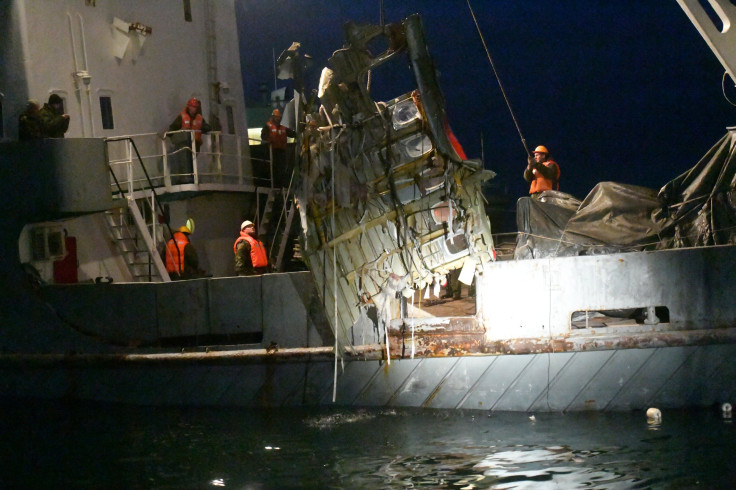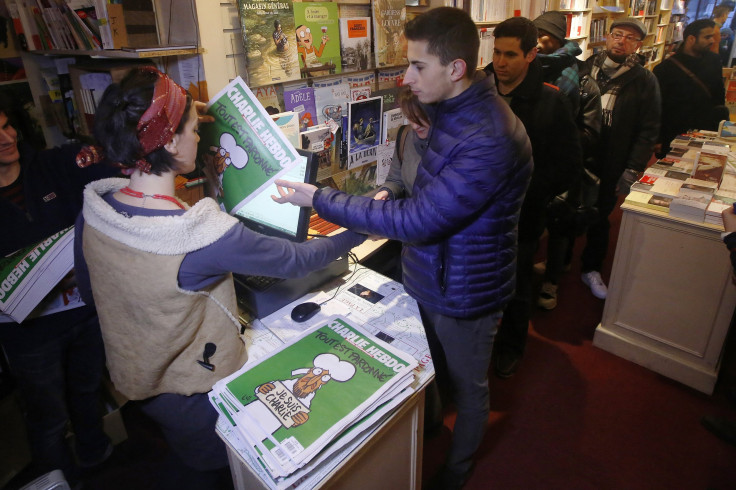Charlie Hebdo Cover: Russia Angered By Cartoon Of Tu-154 Plane Crash

Russian officials were incensed Wednesday by a Charlie Hebdo caricature of the fatal Tu-154 plane crash over the Black Sea, showing the plane falling as a member of the Alexandrov military choir screams. The cartoon’s caption reads: “The repertoire of the army choir is expanding.”
Defense Ministry spokesman Maj. Gen. Igor Konashenkov issued a statement, calling the cartoon an “abomination.”
“It is degrading for any human being to even pay attention,” Konashenkov said, adding, "If such, I dare say, 'artistry' is the real manifestation of 'Western values', then those who hold and support them are doomed ― at least to loneliness in the future."
Ninety-two people, including 60 members of the Alexandrov Ensemble army choir, were aboard the aircraft when it went down Christmas Day, shortly after takeoff from Sochi Adler airport. There were no survivors.
The caricature was one of several published by the French satirical magazine Wednesday, Tass reported. Another of the cartoons depicted the assassination of Russian Ambassador to Turkey Andrei Karlov, who was shot to death Dec. 19 at an art exhibition in Ankara by a member of the Ankara’s riot police force.
Charlie Hebdo has mocked Russia in the past. It published a pair of caricatures related to the downing of a Russian A321 in Egypt that killed 224 people in 2015, prompting an official protest to the French government. One depicted plane parts and bodies raining down with the caption “Daesh [the Islamic State group]: Russian air force intensifies its bombing.” The second depicted a skull with broken sunglasses in the foreground and a burning plane in the background with two legends: “The dangers of low cost Russian” and “I should have taken Air Cocaine.”
In October, the magazine published cartoons of the opening of the Russian Orthodox Culture Center in Paris.
Charlie Hebdo’s Paris office was attacked Jan. 7, 2015, by terrorists who killed 12 people and injured 11 more for publishing a cartoon of the Prophet Muhammad with a bomb on his head. The magazine responded the following week with a cartoon of Muhammad with a tear in his eye, holding a “Je suis Charlie” [“I am Charlie”] sign, and the caption, “All is forgiven.” “Je suis Charlie” was the slogan of solidarity adopted in the wake of the attack.

After the Nov. 13, 2015, Paris terrorists attacks that killed more than 100, the magazine’s cover depicted the bullet-riddled body of a man drinking champagne and the champagne running out of the holes, with the caption: “They have weapons. Screw them. We have champagne!”
Charlie Hebdo angered the Vatican last January with a cartoon depicting God as a terrorist.
Satirical cartoons are a French tradition, stretching back to Louis XVI and Marie-Antoinette. Charlie Hebdo blends that tradition with an anti-establishment bent. Its predecessor publication, Hara-Kiri, was banned for poking fun at then-President Charles de Gaulle in 1970.
© Copyright IBTimes 2024. All rights reserved.





















